By Andrea Svendsen, Managing Editor.
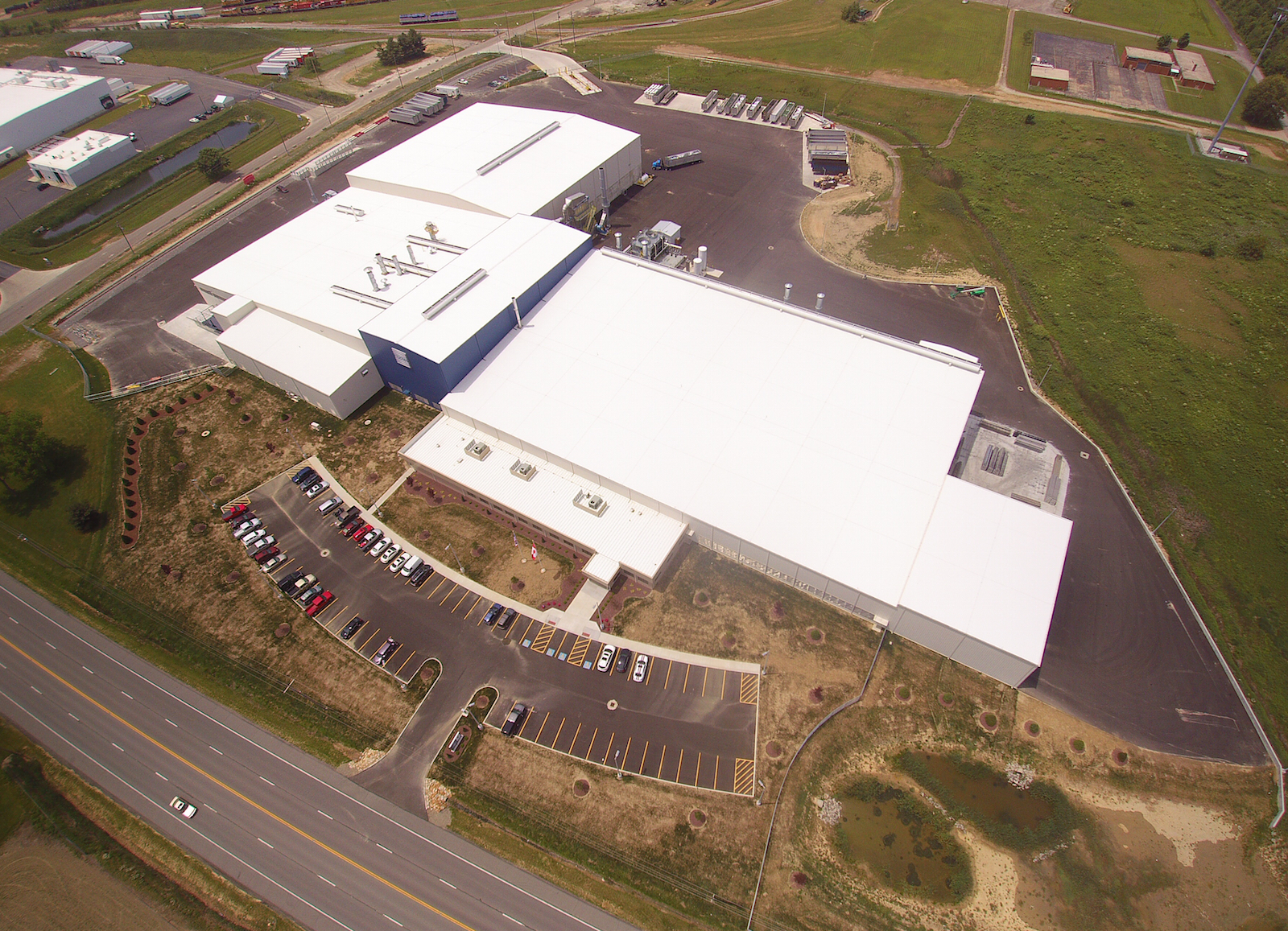
Matalco Inc., a member of the Giampaolo Group, reached a milestone with the startup of its third aluminum remelt and billet production facility located in Lordstown, OH, which will be able to produce 350 million lbs annually when it reaches full capacity. The new ~$100 million, 225,000 sq ft casting complex incorporates state-of-the-art equipment and systems that enable the company to produce high quality remelt billet for the robust North American extrusion industry.
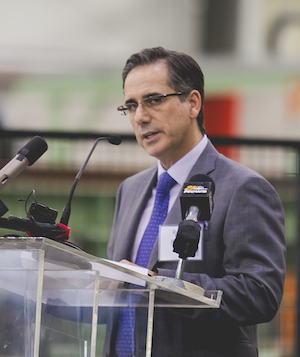
“There were many reasons why Matalco embarked on this sizable expansion, but it was primarily due to the increased demand requirements from our current customer base along with the increased opportunities that we saw,” said Robert Roscetti, vice president of Matalco (U.S.), Inc. The new billet casting capacity will help the company better serve its customer base—including extruders that produce profiles for building and construction, automotive, electrical, and an array of other industries—through the production of high quality remelt billet and increased capacity. In fact, with the combined capacities of its three facilities located in Brampton, ON, Canada, Canton, OH, and the new Lordstown plant, Matalco will be able to produce over 700 million pounds of billet annually by 2018, making it the largest aluminum remelter in North America.
Company History
Triple M Metal LP was founded over 40 years ago by Mike Giampaolo and has since grown to become one of the largest ferrous and non-ferrous metals recycling and processing companies in North America. Mike Giampaolo continues to serve as the company’s chairman and is a principal shareholder of the Giampaolo Group of companies.
In 2004, Mike Giampaolo and Antonio (Tito) Giampaolo announced plans to invest $50 million to build a new remelt and billet casting facility in Brampton, ON, Canada—Matalco Inc. The 110,000 sq ft facility became fully operational in mid-2006, with an annual capacity of 250 million lbs of aluminum billet in diameters ranging from 6 to 13 inches and log lengths of 125-288 inches. In 2010, a second remelt and billet casting facility was added in Canton, OH, through the acquisition of Thakar Aluminum Corporation. An upgrade project at the Canton facility was completed in March 2011, which added new equipment and upgraded existing systems in order to increase capacity and improve efficiency. The Canton facility has an annual capacity of 130 million lbs of billet in 7, 8, 9, 10, 11, and 12 inch diameters up to 240 inches long.
Since its inception, Matalco has built a reputation of being a leading producer of high quality, 6000 series aluminum billet for the aluminum extrusion and forging industries, serving Canada and the midwest and northeast regions of the U.S. The company aims to continue to build this reputation with the start-up of its third facility in Lordstown—the grand opening of which was held nearly ten years to the date from the official opening of Matalco’s first facility in Brampton.
New Remelt Facility
Matalco began looking at parcels of land to build its new state-of-the-art billet manufacturing facility in 2013, considering areas in Michigan, Indiana, Pennsylvania, and Ohio. The company eventually selected a 32 acre site in Lordstown that is part of a 500 acre business park with rail access. “We landed here because of the incentive packages that were being provided on both state and local levels,” said Roscetti. “It also has excellent rail access. This is our first opportunity for onsite rail, not only for inbound material, but we’re also looking at outbound rail to expand our reach.” The size of the site also provides an ample amount of land to expand operations, if needed.
Groundbreaking for the greenfield facility was held in September 2014, which was followed by an aggressive construction and equipment installation timeline that lasted approximately 16 months. “The main challenge in the construction of the Lordstown facility was the weather,” explained Roscetti. “The winter of 2015 was the coldest on record in the northeastern Ohio region. That, coupled with a surprisingly fast spring thaw, impeded construction activity and caused delays to our construction schedule.” Matalco worked with its construction management company and real estate development group to create contingency plans and realign construction activities, which enabled them to successfully bring the project back on schedule with no impact to overall costs. First cast at the new 225,000 sq ft facility was achieved in March 2016, with the grand opening held shortly thereafter in June.

“This is my fifth casthouse start up and I’m very impressed with the entire operation and the crew we’ve got here so far. There are less issues than I have seen with some of the previous start ups I’ve worked on,” said John Pereira (Figure 3), vp of Operations. “I’ve had the privilege to be part of the entire process, from designing stage, procurement of equipment, to the commissioning of the plant, which allowed me to use my years of experience for a seamless start up. We were looking for the most technologically advanced equipment we could find for a low cost operation. Our priority, as always, was a quality product that was environmentally conscious and safe for employees.”
Scrap Management
Matalco’s business model maximizes the usage of scrap versus prime aluminum, typically 75% scrap and 25% prime, with the majority of the raw materials supplied from within a 500 mile radius of its facilities (including all scrap and primary aluminum purchases). Onsite at the Lordstown facility is Matalco’s sister company Triple M Metal, which manages the scrap area, with one section for Triple M Metal’s operations for sorting nonferrous scrap (aluminum, copper, zinc, etc.) and another section for Matalco. Triple M Metal sources and manages the scrap coming into the facility, utilizing quality assurance procedures that include contaminant inspection when the material is received, followed by chemistry and grading in the scrap building. Alloying and melt preparation for casting at Matalco is dependent on carefully graded scrap charge for the type of 6xxx alloy to be cast, so the scrap is sorted into specific alloys. The site can process a variety of materials, including painted and long scrap, as well as chips. The ability to process painted scrap is unique for Matalco’s facilities. The scrap that is not suitable for Matalco’s operations is sold by Triple M Metal.
In addition to sourcing post-consumer scrap, Matalco has tolling agreements with many of its customers to take back process scrap and convert it to remelt aluminum billet.
“This is the first time that we’re actually sharing space,” said Roscetti in describing the company’s relationship with Triple M Metal. “This is very unique to Matalco and provides us with a fantastic advantage over our competitors. Most companies don’t have the luxury of a huge sister company that’s a recycler. It helps us get great pricing on scrap and ensures that we can source scrap, even though the scrap market is pretty tight right now.”
The cooperation with Triple M Metal enables Matalco to ensure high scrap content using quality raw materials, which leads to a more environmentally friendly product. “Matalco fully recognizes and supports the benefits of the LEED® (Leadership in Energy and Environmental Design) program initiatives,” noted Roscetti. “As a result of our strong scrap supply chain and local sourcing strategy, Matalco is well positioned to maximize the materials’ requirements as they pertain to the globally recognized LEED program.”
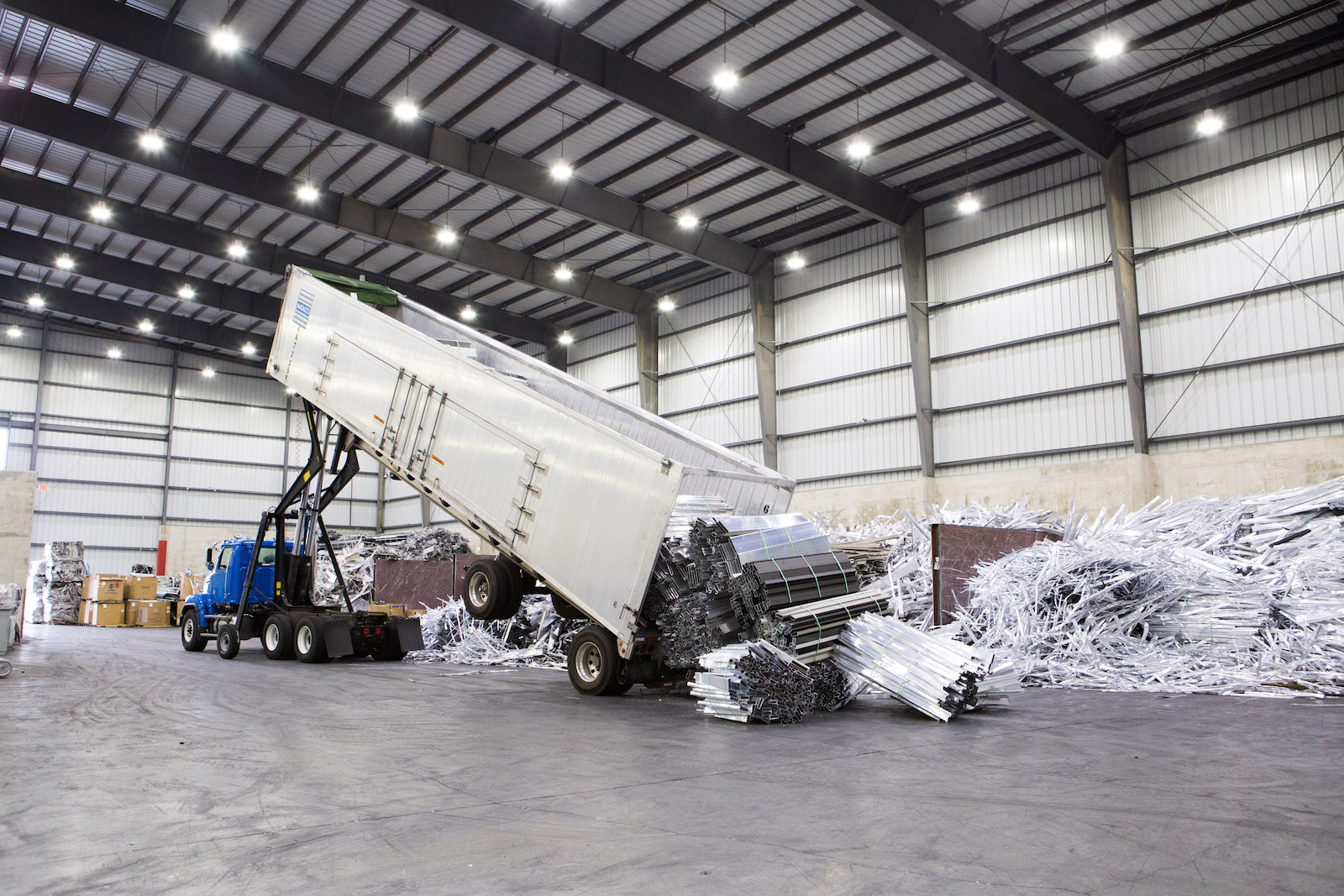
Melting Area
In the scrap area, a 30,000 lb charge car supplied by Rackwitz Industrieanlagen GmbH (RiA) is loaded, then carries the metal along a track to one of the two melting furnaces. The charge car has a built-in scale, so that the operators know the exact amount of material being charged into the furnace.
Both of the melting furnaces were supplied by GNA alutech with regenerative burners from Bloom Engineering. The first furnace is a 110,000 lb tillable furnace with an electromagnetic stirring system that was designed to melt long and painted scrap. The second furnace is a 190,000 lb stationary furnace with a mechanical pump system that is designed to primarily handle chips. Skimming of the two melting furnaces is performed using a RiA machine.
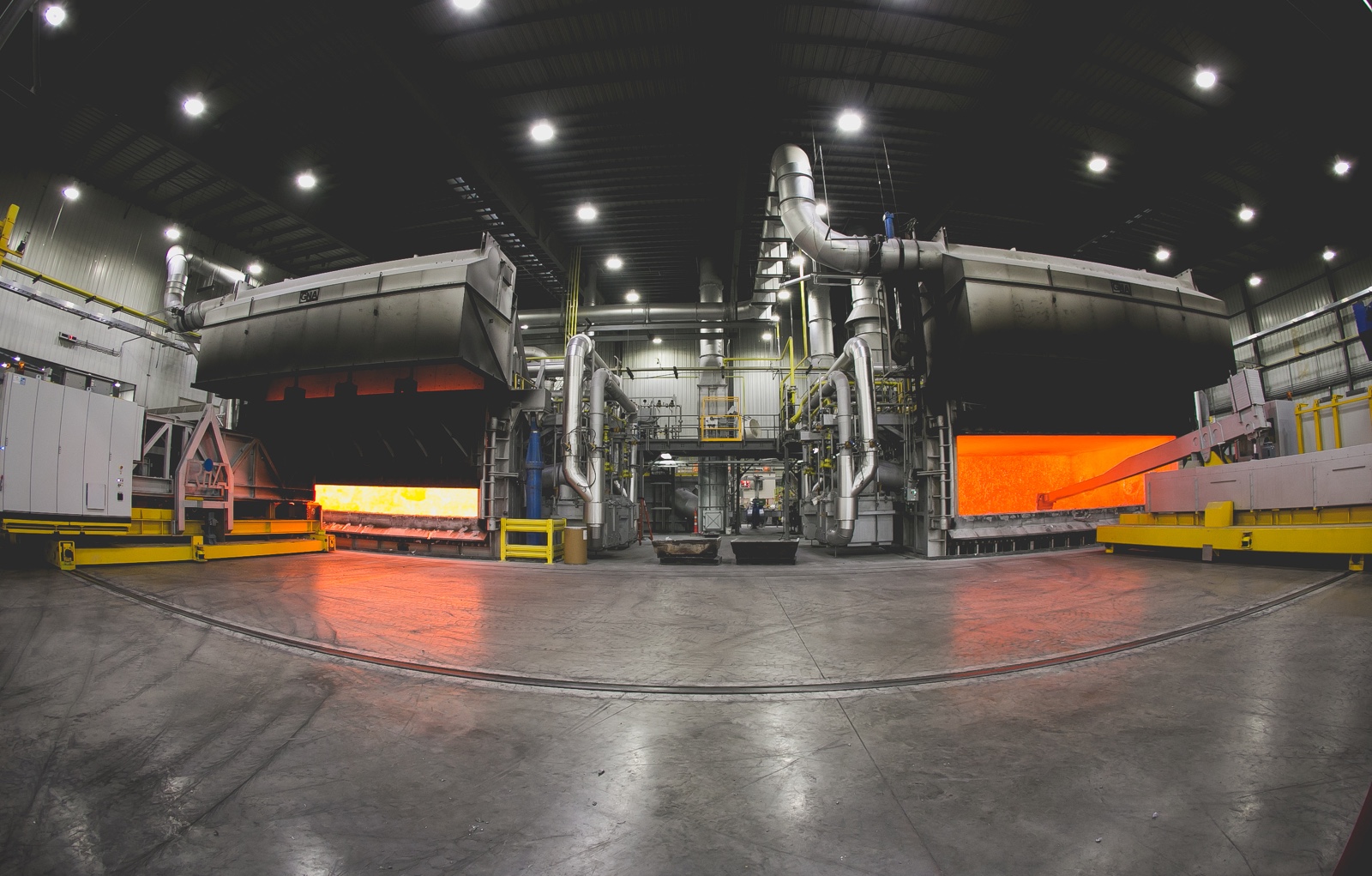
The two 100,000 lb holding furnaces were also supplied by GNA, one fed by the tilting melting furnace and the second fed by the stationary furnace using a pump system. Once the alloy chemistry of the melt in the holding furnaces is verified, it goes through a Pyrotek SNIF SHEER P-180UiT degassing system built into the troughs. The SNIF system removes hydrogen by optimizing argon gas purging bubble distribution without causing metal disturbance. The degasser is a tilting system designed to drain molten metal into the casting line or send it back to the holding furnace during an alloy change. Following degassing, the molten aluminum passes through a Drache ceramic foam filter (CFF) box prior to casting.
Matalco also has two sow preheating furnaces that dry out the ingot prior to melting, removing moisture in order to prevent explosions and improve safety when the sow is loaded into the melting furnaces.
In addition, the company processes its own dross in-house, using a tilting rotary furnace manufactured by Melting Solutions. Environmental parameters of the melt area are maintained with two baghouses, one for the rotary furnace and a large baghouse for the main melting furnaces. Both baghouses were supplied by Mikropul/Nederman.
Vertical DC Casting
The vertical casting system, designed and manufactured by Wagstaff, has four mold tables capable of producing 7, 8, 10, and 12 inch billet up to 300 inches in length. The 7 inch mold table has 90 strands, making it one of the largest 7 inch tables in North America. The casting system includes the ability to tilt the table following a cast for inspection and cleaning of the molds, while the finishing billet is inspected for marks and flaws and then lifted by crane to the conveyor table. As each row of billet is removed, a platform moves forward to minimize the open areas of the casting pit to improve safety.
The vertical casting process requires a careful balance between the speed of casting and the rate of cooling in order to achieve a proper cast. Despite the use of a state-of-the-art casting system and the skill levels of well-trained operators, bleed outs can sometimes occur causing melt to fall into the pit. When this happens, operators generally have two options: abort the cast or manually plug the affected billet mold with a stop-off cone in order to prevent a potentially catastrophic event from occurring, such as an explosion. Manually plugging the mold brings the operator in close proximity to molten metal. Therefore, to improve the plugging process and improve worker safety, Matalco is implementing a new Wagstaff-designed system that is capable of monitoring the casting process for any signs of bleed out and automatically plugging an affected mold without direct operator interaction. When successfully commissioned, this will be the first automated plug system in the world to be implemented on an industrial scale.
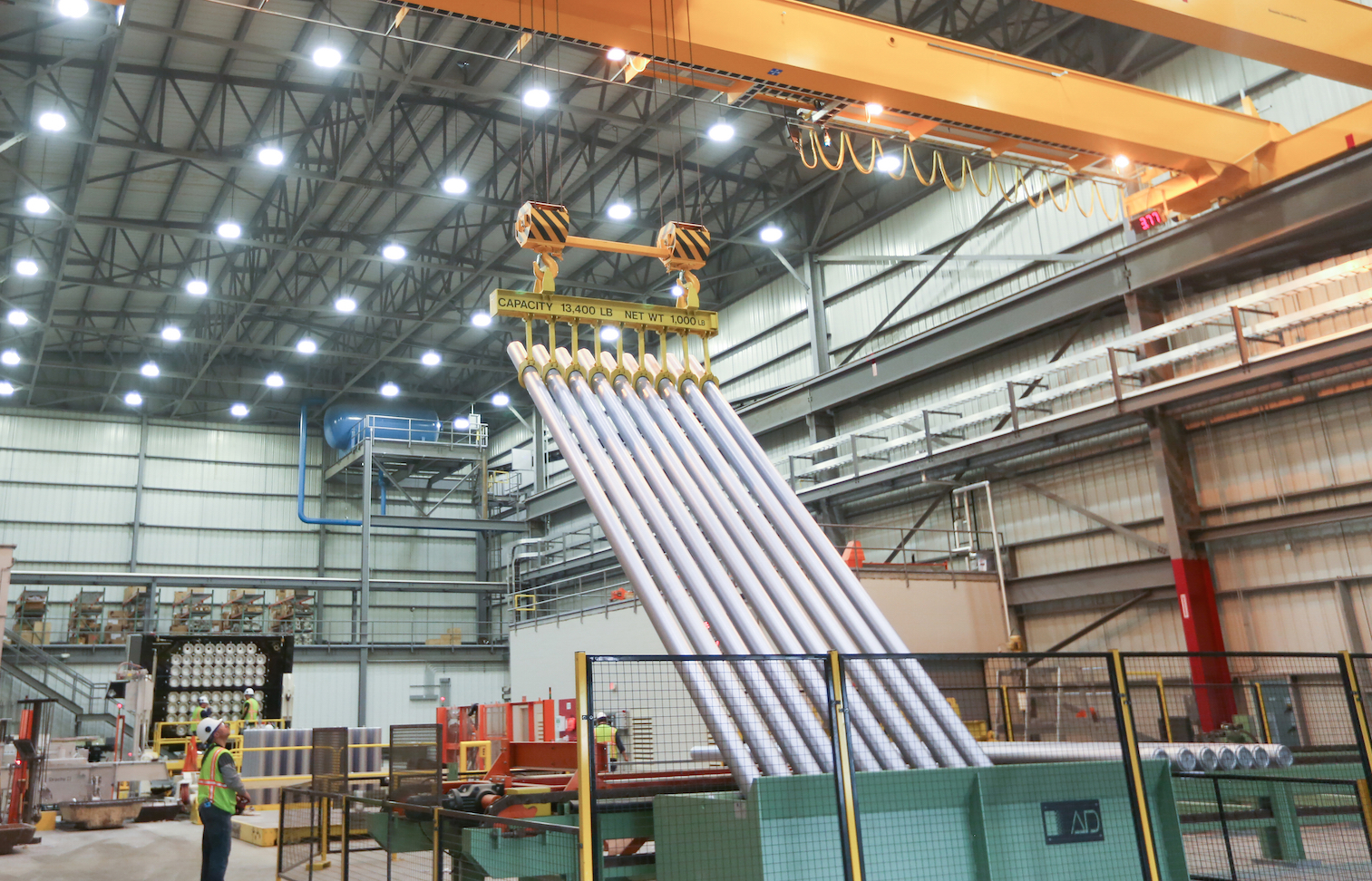
Homogenizing and Sawing Area
Every billet that is cast passes through an Olympus ultrasonic testing station prior to homogenizing. The ultrasonic inspection system checks for both external and internal cracks based on the different alloy recipes of the billet. It can inspect down to a single small spot of the billet and up to 100% volumetric.
The GNA homogenizing line includes four batch furnaces, two cooling chambers, and three staging areas. The ovens are designed with three temperature control zones and have a capacity of 100,000 lbs each. Heat transfer is assured by roof-mounted radial type recirculation fans, one installed in each zone. The furnaces are also equipped with a travelling roof, which is designed to raise and lower to optimize airflow speed for ideal heat transfer conditions. The two cooling chambers are equipped with three air reversible fans mounted on a side wall. The cool air is delivered to the load and distributed by ductwork and louvers integrated into the cooling chamber construction. Furthermore, the entire homogenizing line is completely automated—a transfer car automatically loads the billet and carries it to and from the homogenizing ovens and cooling chambers and on to the sawing area. Little-to-no human interaction is required for the homogenizing process to be completed.
All of the billet handling equipment—from casting pit through to homogenizing and on to the sawing lines—was provided by Advanced Dynamics Corporation. The supplier also subcontracted with Olympus to provide the ultrasonic station and with Sermas for the three automated sawing stations, which were integrated into Advanced Dynamics’ overall system. Two of the saws are designed to cut billet to lengths of 16.5-288 inches. For cut-to-length billet, two short cut lengths can be handled and stacked onto a jig, which improves productivity and gives time for the automatic strapping station to work. The third saw has the unique capability of being able to cut the billet as small as 8.5 inches in length; these lengths are used in forging operations. The 8.5 inch sawing operation is performed within an enclosed cage for safety, with automated loading and plastic wrapping of the pallets. A scale is located just outside the cage to weigh the pallets prior to shipping.
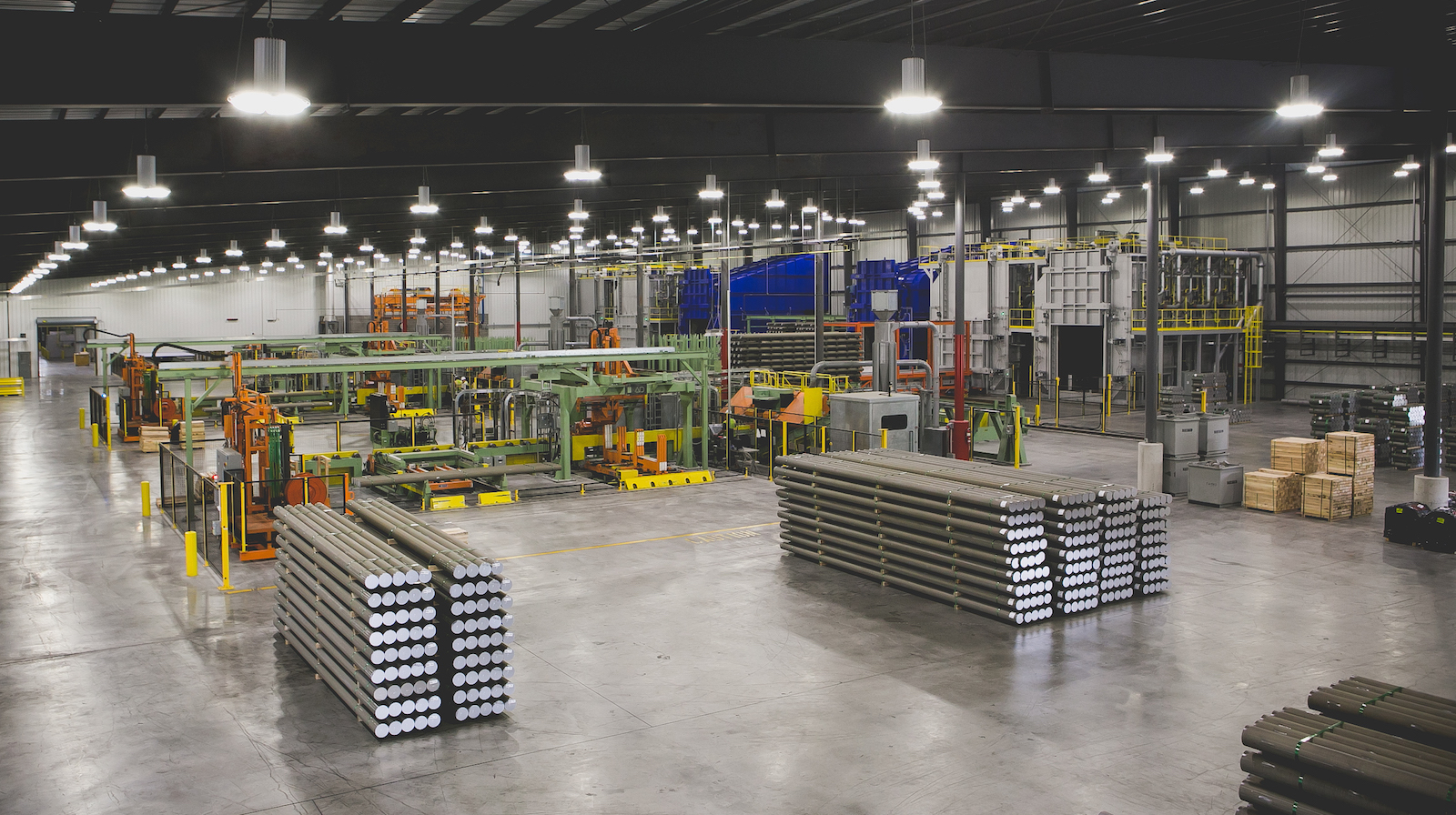
Conclusion
Representing a commitment to future success and the industries they serve, the new Matalco remelt and billet production facility in Lordstown implements cutting-edge technology to increase production of high quality billet. In addition, the entire plant was designed with the safety of the personnel in mind, including easy material flow from one operation to the next and with minimal direct operator handling. Currently, the Lordstown facility is producing about 500,000 lbs of billet per day, and the company is confident it will be able to achieve the 1 million lbs per day milestone by 2018, with an annual capacity of 350 million lbs.
With the opening of their third facility, Matalco is well on the way to achieve its goal of being the largest remelt company in North America with great potential for further growth. The technologies implemented within the remelt and casting areas offer the possibility to expand into the production of a range of new alloys and products. The size of the site, with additional acres of available land, provides abundant room for new buildings and operations as needed, while the location, with its excellent access to rail operations, provides the opportunity to expand the company’s reach beyond extruders in the midwest and northeast regions of the U.S.
“Matalco represents a growth division of the Giampaolo Group of companies,” noted Roscetti. “Both the ownership team and senior executives are very positive about its potential, as well as the various growth opportunities in this industry, especially with the ability to grow into other alloys and product lines.”
